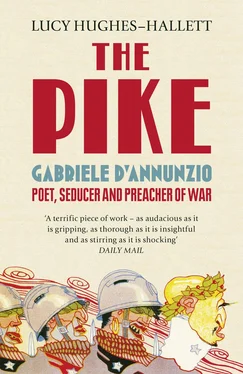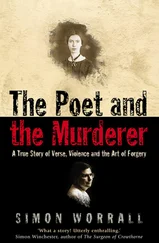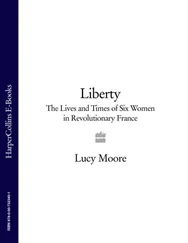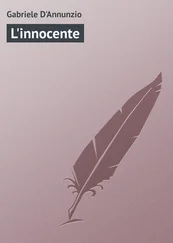In Fiume, d’Annunzio drew up a constitution for his little state. ‘The Charter of Carnaro’, as he called it, is in many ways a remarkably liberal document. It promised universal adult suffrage and absolute legal equality of the sexes. Socialists applauded it. But in the 1920s it was hailed as ‘a blueprint of the fascist state’.
There is an acceptable d’Annunzio, who writes lyrically about nature and myth, and there is an appalling d’Annunzio, the warmonger who calls upon his fellow Italians to saturate the earth with blood, and whose advocacy of the dangerous ideals of patriotism and glory opened the way for institutionalised thuggery. Those who admire the former have often tried to ignore, or even deny, the existence of the latter. After the fall of Mussolini it became conventional to suggest either that d’Annunzio could not really have had any sympathy for fascism, because he wrote such beautiful poetry, or – conversely – that because his politics were deplorable, his poetry cannot really be any good. I contest both arguments. The two d’Annunzios are one and the same.
D’Annunzio knew exactly how ghastly conflict could be. As a young man he visited hospitals out of curiosity. He was an attentive nurse to his mistresses when they fell ill, loving them the most, he told them, when they were suffering or near death. In wartime he spent weeks at the front, witnessing the slaughter, smelling the unburied corpses. He made careful notes about wounds, and the effects of decomposition on the bodies of his dead friends. In his wartime oratory he used the word ‘sacrifice’ over and over again in knowing reference to religious fables (pagan and Christian) where young men were killed that the wider community might benefit. When two fighter pilots of whom he was fond went missing in 1917 he wrote in his private diary that he devoutly hoped they were dead.
He was one of the cleverest of men, but also one of the least empathetic. He was as ruthless and selfish as a baby. ‘He is a child,’ wrote the French novelist, René Boylesve, ‘he gives himself away with a thousand lies and tricks.’ Child-like, he saw others only in relation to himself. In love, he was adoring, but once he had tired of a woman he ceased to think about her. He was an excellent employer (though far from punctilious about paying salaries). He was moved by the sweetness of small children. He was very kind to his dogs. But the woman who brought in his meals, he once wrote, was no more to him than a piece of furniture, a cupboard on feet.
One of his most famous poems is about the Abruzzese shepherds who could be seen at summer’s end traipsing along the beaches, robed and bearded like biblical patriarchs, their woolly charges churning around them like warm surf. It is a lovely lyric, tender and grand; but to those who know d’Annunzio it cannot be read as harmless pastoral. He wrote often about the sheep herded before dawn through the sleeping streets of nineteenth-century cities, their wool eerily silvered by the moonlight – a commonplace sight which few other writers notice. To him the animals weren’t pretty reminders of the countryside. They were hosts of creatures on their way to be slaughtered. So were armies. The thought didn’t appal him. In 1914, three years before his British contemporary Wilfred Owen made the same comparison, d’Annunzio was likening the herds of bullocks who churned up the roads of northern France, driven to the front to feed the army, to the trainloads of soldiers going the same way. Like Owen, d’Annunzio knew that in war men died as cattle. Unlike Owen, he considered their death not only dulce et decorum, sweet and fitting, but sublime.
One evening in Rome in May 1915, d’Annunzio was chatting lightly in his hotel room with a couple of acquaintances. One was the sculptor Vincenzo Gemito, the other was the Marchese Casati (with whose wife – ‘the only woman who could astonish me’ – d’Annunzio had a long amitié amoureuse). Then, this agreeable interlude over, he stepped out onto his balcony to deliver one of his most incendiary speeches, urging the crowds beneath his window to transform themselves into a lynch mob. ‘If it is considered a crime to incite citizens to violence then I boast of committing that crime.’ Three paces and a window pane separated the sphere in which he was an urbane socialite and man of letters from that in which he was a frenzied demagogue calling upon his countrymen to murder their elected representatives and to drench the soil of Europe with blood. Both personae are genuine. In writing about him I have tried to find a form which does justice to them both.
D’Annunzio’s must be one of the most thoroughly documented lives ever lived. He had a notebook in his pocket at all times. Those notebooks were his precious raw material. Their contents reappeared in his poems, his letters, his novels. When he flew (or rather was flown – he never learned to pilot himself) he took a specially bought fountain pen with him so that he could jot down his impressions even while dodging anti-aircraft fire. He noted the clothes and sex appeal of the women he met so immediately that it seems he must have been reaching for his book even before they turned away. Eating alone at home, he wrote down a description of the maid as she served him his lunch. A discriminating eater, he also made notes on the asparagus.
His works are full of descriptions of sex so candid they still startle. In his morning-after letters he would describe back to a lover the pleasures they had enjoyed, an intimate kind of pornography which was also an aide-mémoire for himself and, often, the first draft for a fictional scene. We know in enormous detail what d’Annunzio did in bed, or on the rug before a well-banked-up fire (he felt the cold dreadfully), or in woods and secluded gardens on summer nights. We know he liked occasionally to play at being a woman, pushing his penis out of the way between his thighs. We know how much he enjoyed cunnilingus, and that he therefore preferred a woman to be at least five foot six inches tall, or, failing that, to wear high-heeled shoes, so that when he knelt before her his mouth comfortably met her genitals. We have his descriptions not only of his lovers’ outward appearances but of the secret crannies of their bodies, of the roofs of their mouths, of the inner whorls of their ears, of the little hairs on the back of a neck, of the scent of their armpits and their cunts.
The notebooks, d’Annunzio’s enormous literary output, and his even larger correspondence, have allowed me to show the man’s inside: his thoughts, tastes, emotions and physical sensations; how moved he was by the pathos of a pile of dead soldiers’ boots; how he relished the slithery warmth of a greyhound’s coat under his hand. And because he was a public figure for over half a century, I have been able to draw on dozens of others’ accounts of him and his doings to show his outside as well. This book has many viewpoints. And because d’Annunzio’s life, like any other, was complex, they sometimes contradict each other. An acquaintance, seeing him in Florence, leaning on the stone parapet over the River Arno one grey November day, noticed the elegance of his raincoat (he was always dapper) and tactfully refrained from greeting him, supposing him to be absorbed in the composition of a poem. From his own account, though, we know he could think of nothing but of whether his mistress would shortly appear, and what he would do with her once he had got her back to the room he kept for their assignations, where he had already stowed scented handkerchiefs behind cushions and strewn the bed with flowers.
I have made nothing up, but I have freely made use of techniques commoner in fiction-writing than in biography. I have not always observed chronological order; the beginning is seldom the best place to start. Time’s pace varies. I have raced through decades and slowed right down, on occasion, to record in great detail a week, a night, a conversation. To borrow terms from music (and one of the themes of d’Annunzio’s life to which I have not had space to do full justice is his musical connoisseurship) I have alternated legato narrative with staccato glimpses of the man and fragments of his thought.
Читать дальше












